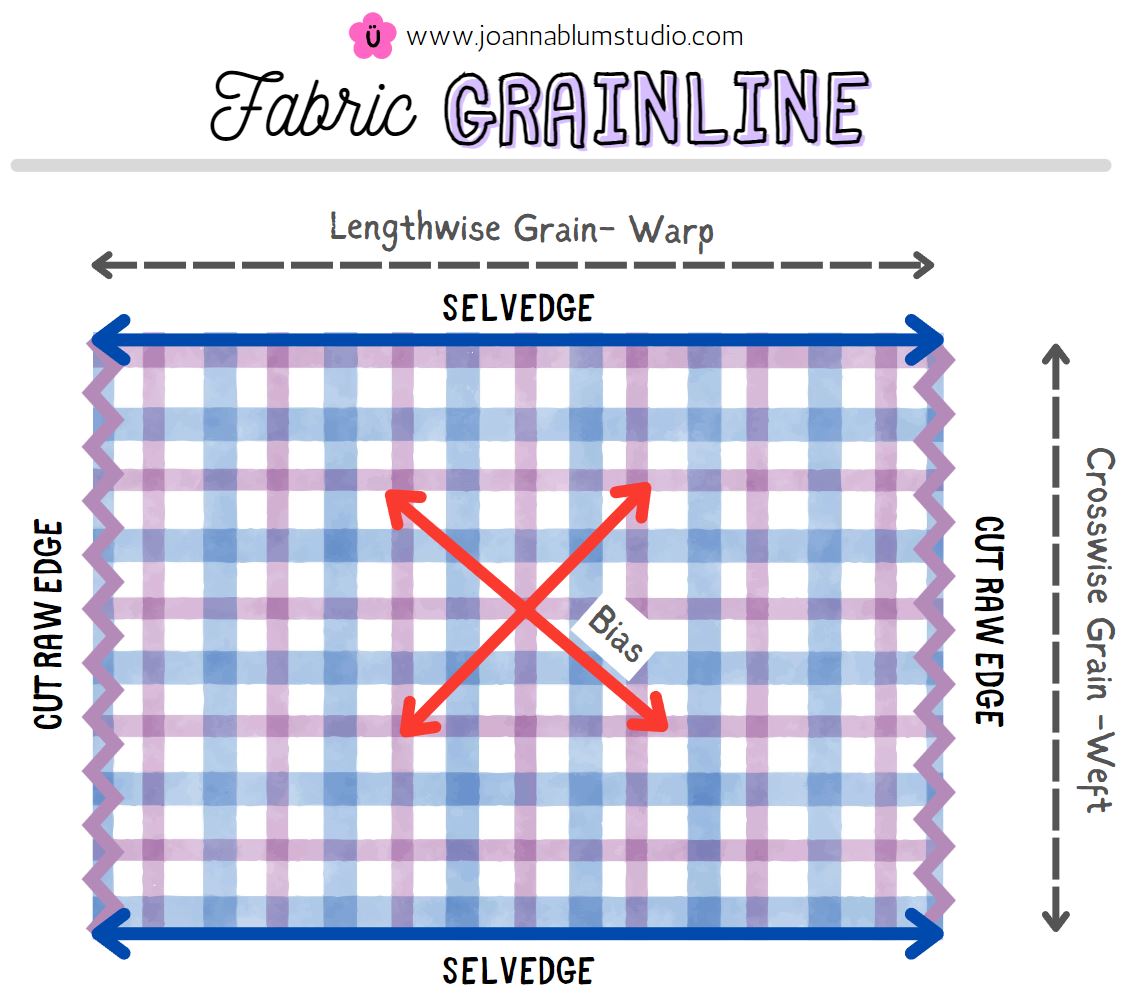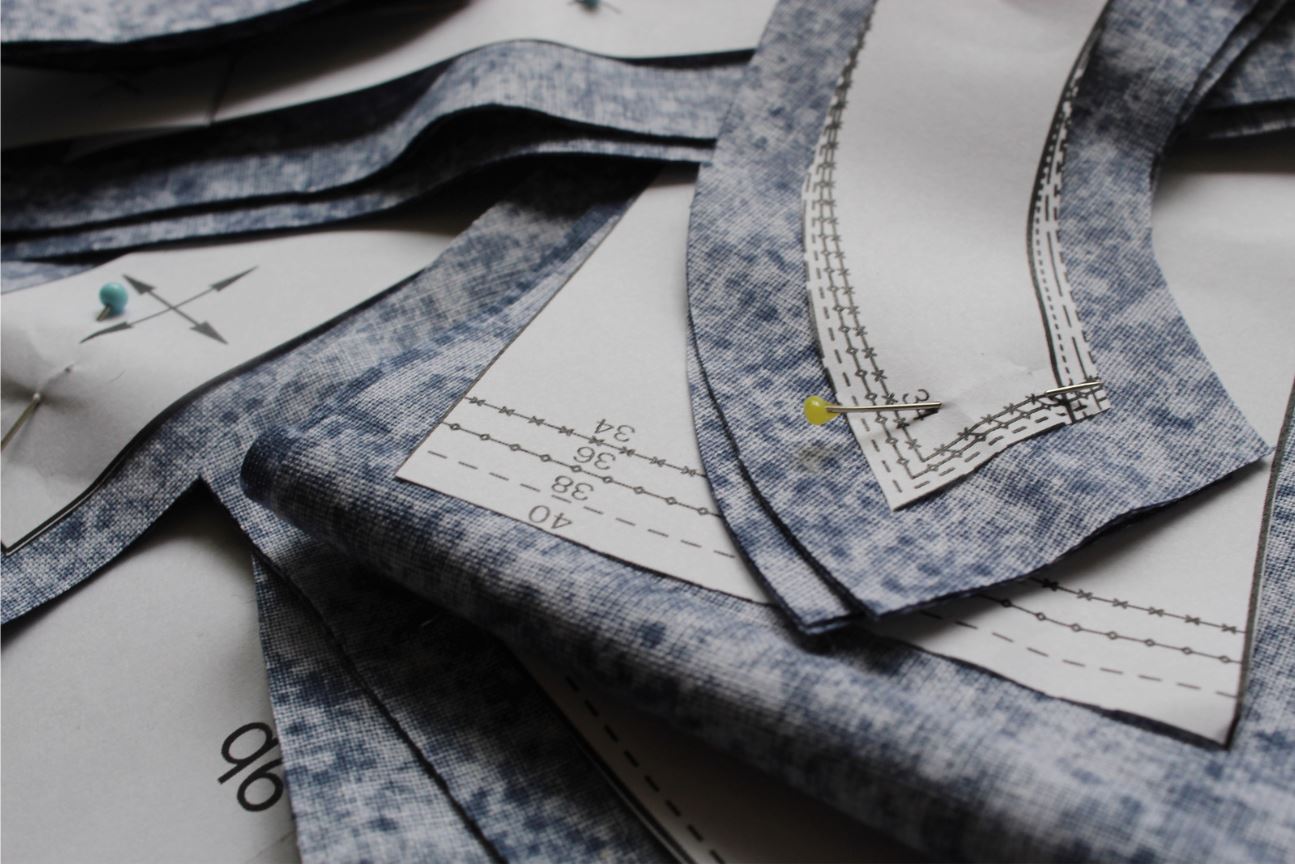From Beginner to Pro: Grainline Essentials for Every Sewist

Mastering Grainline: The Essential First Step for Every Beginner Sewist 🧵✨ Learn why understanding grainlines is the foundation of successful sewing.
Welcome to the world of sewing and crafting! Today, we’re diving into a crucial concept—grainline. Recognizing the fabric grainline in a pattern is a skill that defines your sewing expertise. The grainline acts as your guide, directing how pattern pieces come together to achieve the designer’s intended shape and drape. Ready to explore the grainline? Let’s jump right in!
Types of Grainlines

1. Straight or Lengthwise Grain - The straight(lengthwise) grain runs parallel to the selvedge edge of the fabric. It provides stability and is commonly aligned with the straight edge of a pattern.
2. Crosswise Grain - Perpendicular to the lengthwise grain, the crosswise grain has its unique characteristics. It often has a bit more stretch and is crucial for certain design elements.
3. Bias - The bias is a 45-degree angle(diagonal) to both the lengthwise and crosswise grains. Fabrics cut on the bias have a natural stretch, making them ideal for curved or draped designs.
Importance of Grainline in Fabric:
The importance of grainline in fabric extends beyond just guiding the placement of pattern pieces. It significantly influences the behavior and performance of the garment. Fabrics are often woven or knitted with the intention of the straight grain providing stability, the crosswise grain contributing some degree of stretch, and the bias offering natural elasticity. When pattern pieces are aligned with these grainlines, the garment drapes and fits as intended by the designer. Deviating from the prescribed grainline may lead to distortion in the final product, affecting the way the fabric hangs and how the garment retains its shape. Moreover, understanding the grainline is essential when working with specific fabric types, ensuring optimal results and enhancing the overall quality of the finished garment.
How to Align Properly:
Now that we’ve covered the types, let’s talk about proper alignment. Aligning your pattern pieces with the grainline is crucial for maintaining the intended shape and structure of your project. Here’s a quick guide:

1. Mark Your Fabric - Mark the grainline on your fabric before cutting. Often, pattern pieces feature a long line with arrows at each end, indicating the direction of the straight grain. Make sure these arrows align with the intended direction on your fabric.
2. Align with Pattern - Match the grainline markings on your pattern pieces with the corresponding markings on the fabric. The arrow-marked lines on pattern pieces guide you in aligning them parallel to the selvedge, ensuring a proper hang and fit.
3. Check Throughout Sewing - Pay continuous attention to the grainline as you sew. The arrows on pattern pieces act as visual cues to maintain alignment. Ensuring your fabric stays aligned throughout the sewing process ensures a polished finish and a garment that drapes as intended by the designer.

Congratulations! You’ve just unlocked the secrets of grainline in sewing. Whether you’re a beginner or a seasoned crafter, mastering these basics will elevate your projects to new heights. Remember, the grainline is not just a guideline; it’s your path to crafting excellence.
Happy sewing! 🧵✨
